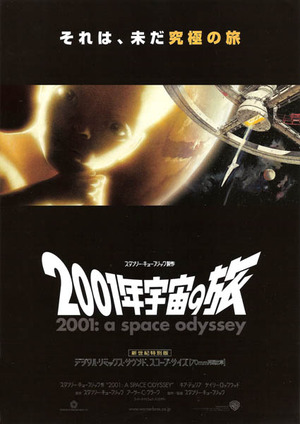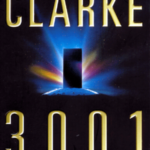On July 27, 2011, “the coolest film program of the summer,” as dubbed by Denver Film Society artistic director Brit Withey, peaked with Stanley Kubrick’s “2001: A Space Odyssey.” The film series fuses the immaculate programming of the DFS with scientists from the Denver Museum of Nature & Science.
Navigating this shuttle of cinematic discovery was Metro State Professor, Vincent Piturro and the Museum’s Astrobiology Curator, David Grinspoon, PhD. Piturro set up the film quoting John Lennon who said “‘2001’ should be played in a temple 24 hours a day.” Grinspoon reverberated what is often said of the movie being, “the only science fiction film ever made.
Both statements embrace the duality of “2001” as both one of the most scientifically accurate films ever produced and a deeply spiritual tome of cinema. Piturro reflected on the film’s significance during the lull of American film production in the 1960s. It was an epically realized masterpiece that blasted into popular consciousness when TV ruled suburban sprawl in the confines of the Hays Code.
Kubrick imagined the film at a turning point of U.S. space exploration. If we had kept the cultural momentum from the Moon Landing, today’s news wouldn’t be covering the end of an era, but missions to Jupiter and beyond. As Grinspoon said, “Kubrick and Arthur C. Clarke got it right; the future was wrong.” One way to gage how far ahead of the game Kubrick and Clarke were is to relate it to “Clarke’s 3 Laws.” Based on Arthur C. Clarke’s theoretical laws of scientific prediction, the 3rd law states: “Any sufficiently advanced technology is indistinguishable from magic.”
It’s somewhat magical in that the production even got funded to begin with. The faith and investment of MGM Studios in Kubrick was rare and unprecedented, especially by today’s standards. As Piturro noted, “It would have never been made by a major studio today.” For a sense of fiscal scale, the Hubble Space Telescope was funded multi-nationally between 1983 and 1990. Kubrick’s budget from MGM exceeded $10.5 Million between 1965 and 1968 and when adjusted for inflation, was nearly the same to launch Hubble.
As Piturro said, “Kubrick wanted the film to be our monolith,” in reference to the black monolith that informs primate evolution and beyond in the film. A monolith that would evolve storytelling and human consciousness through cinema. Or in Grinspoon’s words, “a film about what science means for humanity.”
No film is perfect and Grinspoon brought a list of scientific inaccuracies to share. For one, when the ship transporting Dr. Heywood Floyd to the Moon lands there is swirling dust, which wouldn’t happen in space. Second, the motion of stars moving as the ship makes its way through space is false, as the stars would seem fixed like we view from Earth. Those inaccuracies weighed against the years of research of consultation Kubrick and Clarke embraced are small marbles compared to film’s Jupiter-sized mass.
I walked into the screening with an attitude much like Max Plank would have approaching basic physics. Since my virgin viewing of “2001” in film school on an original 70 mm Cinerama print with star Keir Dullea on hand for questions, the 30 plus viewings after have compounded my wealth of useless knowledge. Yet, Piturro’s wonderfully detailed knowledge of the film’s place in history and his understanding of its technical breakthroughs kept me in check.
As did Grinspoon’s seemingly bottomless passion for it, as well as his personal history viewing “2001.” At a very young age he attended the Boston premiere of the film in 1968 with his father’s close friend — who happened to be Carl Sagan. The “ohs” and “ahs” at this anecdote alone was testament to the enthusiasm surrounding this screening, even if a few snores resounded from the audience.
In the silence of space, everyone can hear you snore and this is sadly an expected reaction in the polarizing effect of “2001.” Some will be touched by the monolith and transcend the boundaries of storytelling, while others will be lulled somnolently into cryogenic hibernation on the odyssey.





